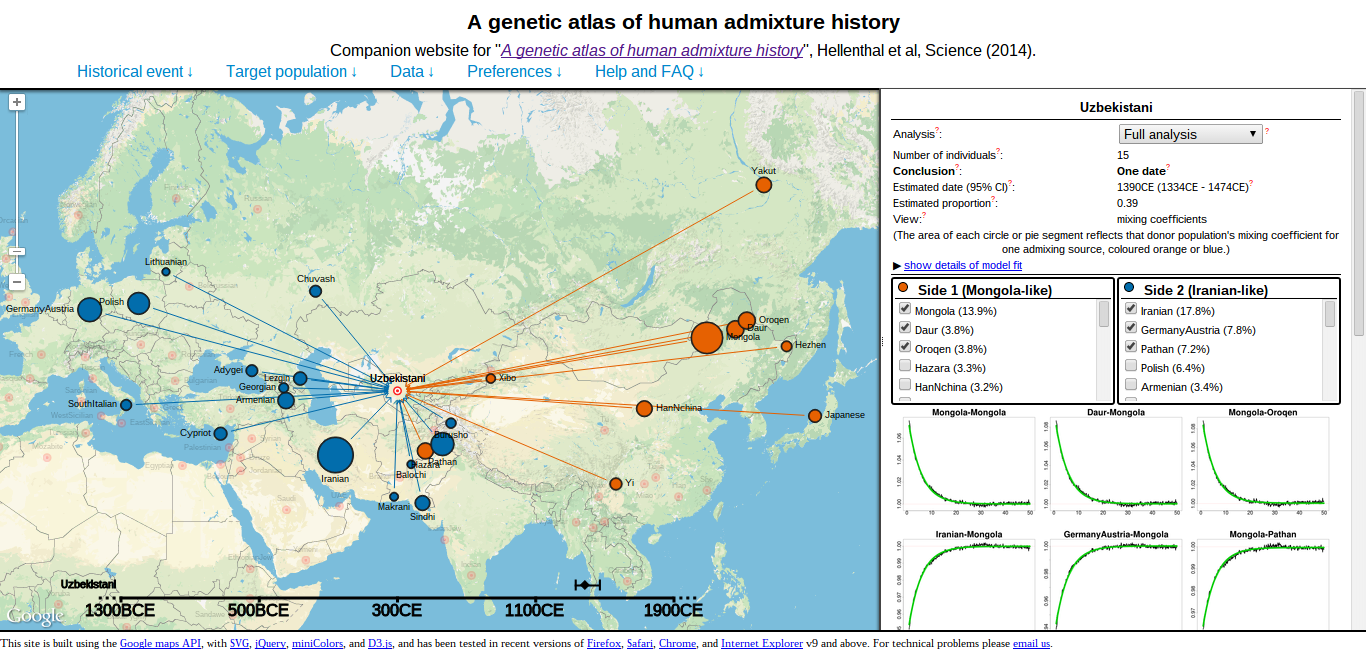A Genetic Atlas of Human History
Hellenthal et al. introduced a new method for detecting and dating genetic admixture events in Science last week. The ins-and-outs of their analysis is, honestly, way over my head; but I do appreciate the paper’s companion website, featuring an interactive map of admixture events for 95 populations around the world.

There’s a wealth of information in it, and their results line up well with historically documented population movements. You can see the Mongol Empire in the clear signal of 13th–14th century Northwest Asian admixture in Central Asian populations such as the Uighur and Uzbekistan. The authors also highlight Eastern Europe as a particularly complex mosaic, not surprising given the porous nature of its interface with the Eurasian steppe. And there are tantalising details: the British Isles comes through as a melting pot with “no strong evidence of admixture,” but curiously the Welsh, Irish and Scottish have a much greater affinity with the Basque than the English do – a hint of remnant pre-Indo-European populations surviving on the Atlantic fringes of Europe? Both Hungarians and Romanians have roots widely spread across the Mediterranean, recalling perhaps the cosmopolitan origins of Roman colonists in Dacia.
The Atlas only goes back as far as 1,300 BCE, so unfortunately there’s not much in the way of prehistory. I hope this limit is imposed by the sample available, rather than the innate ‘memory’ of the human genome, because it would be nice if prehistoric archaeologists paid serious attention to migration again.
Bibliography
- Garrett Hellenthal, George B. J. Busby, Gavin Band, James F. Wilson, Cristian Capelli, Daniel Falush, & Simon Myers (2014). A Genetic Atlas of Human Admixture History Science, 343 (6172), 747-751 DOI: 10.1126/science.1243518